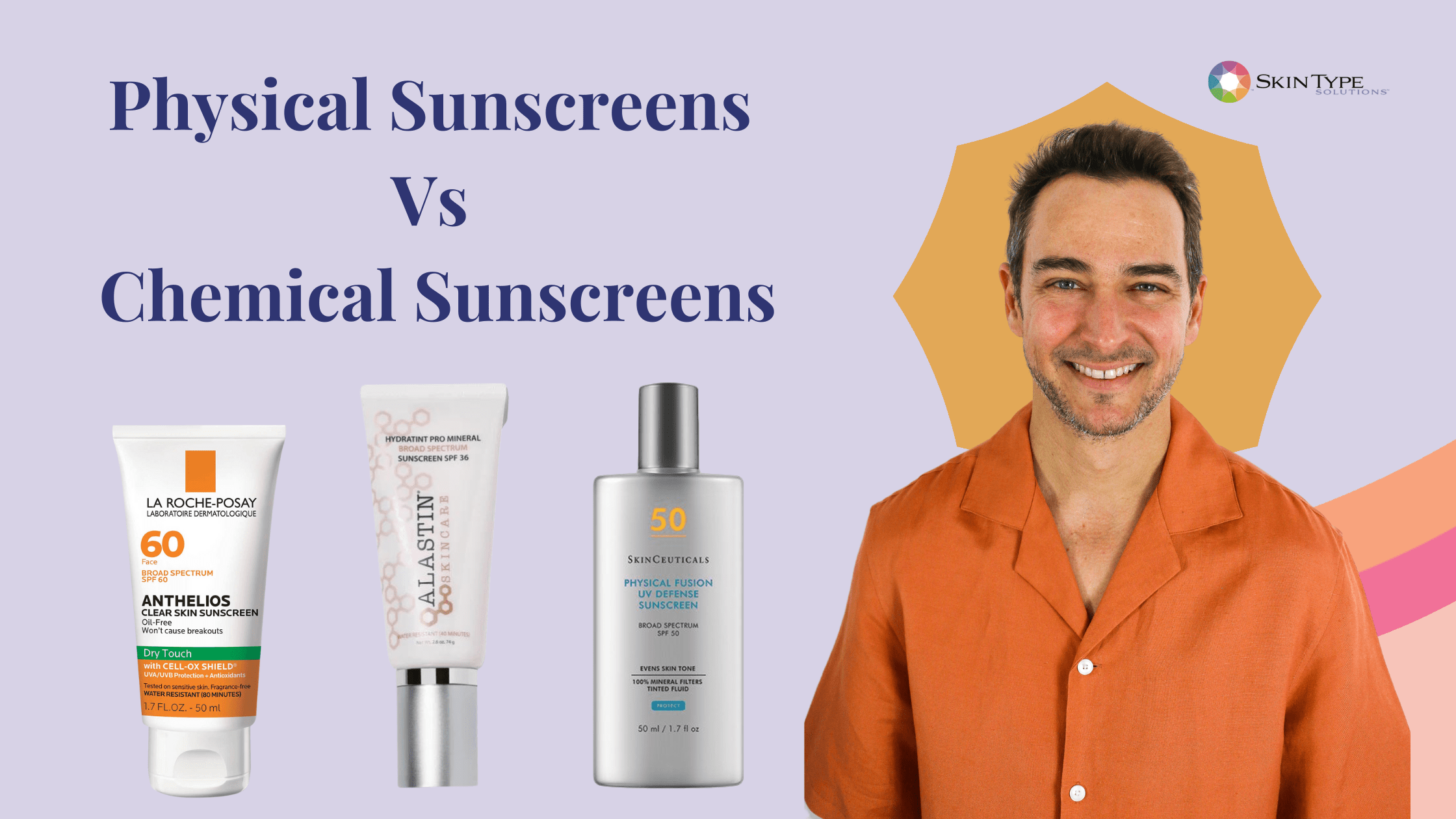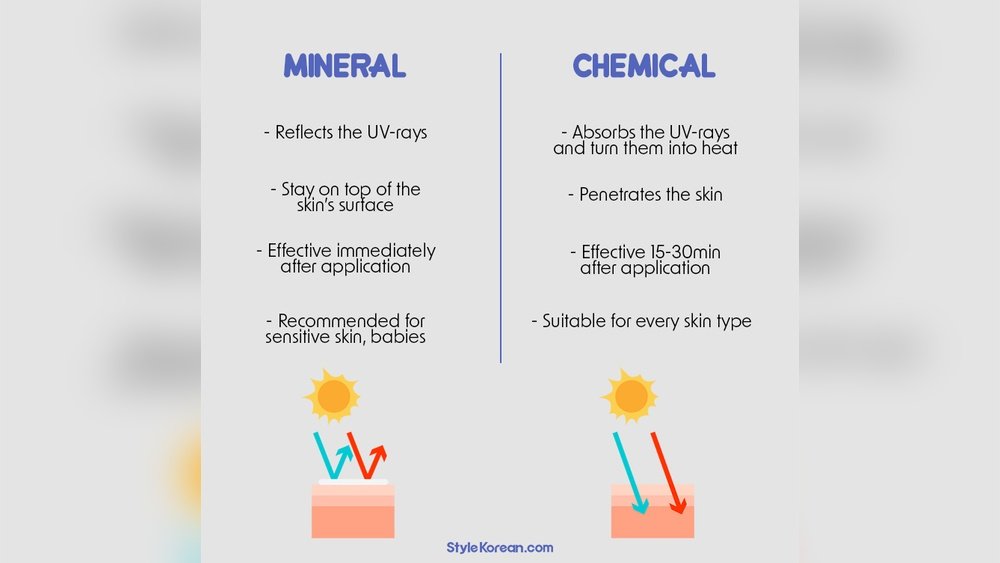When it comes to protecting your skin from the sun, choosing the right SPF in your cosmetics is more important than you might think. You’ve probably seen products labeled as either physical or chemical SPF, but do you really know how they work or which one suits your skin best?
Understanding the difference can change the way you protect yourself daily—and keep your skin healthy and glowing. You’ll discover exactly what sets physical and chemical SPF apart, how each interacts with your skin, and which option might be the perfect fit for your lifestyle and skin type.
Keep reading—your skin will thank you for it!

Credit: www.cocodermatology.com
How Physical Spf Works
Physical SPF, also called mineral sunscreen, protects the skin differently than chemical types. It creates a barrier on the skin surface. This barrier blocks and reflects harmful UV rays. It starts working right after application. The protection covers both UVA and UVB rays. Physical SPF is often gentler on sensitive skin. It does not absorb into the skin but stays on top. This makes it a preferred choice for many people.
Mineral Ingredients Explained
The main minerals used in physical SPF are zinc oxide and titanium dioxide. These minerals are natural and safe for most skin types. Zinc oxide protects against UVA and UVB rays. Titanium dioxide mainly blocks UVB rays. Both ingredients form a thin layer on the skin. This layer acts as a shield against the sun. They are less likely to cause irritation or allergies. Many formulas use a mix of these minerals for broad protection.
Sunlight Reflection Mechanism
Physical SPF works by reflecting sunlight away from the skin. The minerals scatter and reflect UV rays. This prevents the rays from reaching the skin cells. Unlike chemical SPF, it does not absorb the rays. The reflection helps reduce skin damage and sunburn. The mineral particles create a physical barrier that bounces light off. This process keeps the skin cooler and safer in the sun.
How Chemical Spf Works
Chemical sunscreens protect your skin by absorbing UV rays. They contain organic compounds that soak up ultraviolet light. These compounds change the harmful UV energy into a safer form. Then, they release this energy as heat. This process prevents UV rays from damaging skin cells.
Chemical SPF products absorb both UVA and UVB rays. This absorption reduces sunburn and skin aging. The formulas are usually lightweight and easy to apply. They blend well without leaving a white residue.
Absorption And Heat Conversion
Chemical filters absorb UV radiation into the skin’s surface. After absorption, the molecules become excited by the UV energy. They release this energy as small amounts of heat. This heat dissipates harmlessly from the skin. This method stops UV rays from penetrating deeper layers.
The absorption process depends on the chemical structure. Some filters absorb UVB rays better. Others target UVA rays. Many sunscreens combine several filters for broad protection. The skin feels comfortable since the sunscreen does not sit on top.
Common Chemical Filters
Popular chemical filters include avobenzone, oxybenzone, and octocrylene. Avobenzone is effective against UVA rays. Oxybenzone protects mainly against UVB rays. Octocrylene helps stabilize other filters and adds UVB protection.
Other filters such as homosalate and octinoxate are also common. These work mainly on UVB rays. Each filter has unique absorption properties. Sunscreens mix these filters for balanced coverage. Check product labels to know which filters are included.
Benefits And Drawbacks
Choosing between physical and chemical SPF in cosmetics depends on several factors. Each type offers unique benefits and has some drawbacks. Knowing these helps in picking the right sunscreen for your skin and needs.
Physical SPF acts by reflecting UV rays off the skin. It works immediately after application. Chemical SPF absorbs UV rays and converts them to heat. It usually takes 15-20 minutes to become effective.
Skin Sensitivity And Irritation
Physical SPF is less likely to cause skin irritation. It is ideal for sensitive or acne-prone skin. It does not penetrate deep into the skin.
Chemical SPF may cause irritation for some people. It contains ingredients that absorb into the skin. This can trigger reactions, especially in sensitive skin types.
People with sensitive skin often prefer physical SPF for its gentle nature. Those without sensitivity may use chemical SPF for its lighter feel.
Appearance And Texture Differences
Physical SPF tends to be thicker and can leave a white cast. This can be visible on darker skin tones. It may feel heavier on the skin.
Chemical SPF usually has a thinner, more transparent texture. It blends easily without leaving residue. It feels lighter and more comfortable for daily use.
Some physical SPFs have improved formulas to reduce the white cast. Choosing the right product can balance protection and appearance.
Choosing Based On Skin Type
Choosing sunscreen based on your skin type helps protect your skin better. Different sunscreens work well for different skin needs. Physical SPF and chemical SPF have unique traits that suit certain skin types. Knowing which one matches your skin keeps your skin healthy and comfortable.
For Sensitive And Acne-prone Skin
Physical SPF is often best for sensitive skin. It uses minerals like zinc oxide and titanium dioxide. These minerals sit on the skin’s surface and block UV rays. They rarely cause irritation or redness.
Acne-prone skin may benefit from physical SPF too. It does not clog pores easily. Chemical SPF can sometimes irritate or trigger breakouts. Look for non-comedogenic labels to avoid acne flare-ups.
For Oily And Normal Skin
Chemical SPF works well for oily and normal skin types. It absorbs into the skin and feels lighter. This helps reduce the greasy or heavy feeling.
Oily skin may prefer chemical SPF with a matte finish. It controls shine and keeps skin fresh. Normal skin can use either type based on comfort and preference. Choose a formula that blends easily without leaving white residue.
Safety And Environmental Impact
Choosing between physical and chemical SPF in cosmetics involves understanding their safety and environmental impact. Both types offer sun protection but differ in how they interact with your skin and nature. Knowing these differences helps you make a better choice for your health and the planet.
Potential Allergies And Reactions
Chemical SPF ingredients absorb UV rays but can irritate sensitive skin. Some people experience redness, itching, or rashes after using chemical sunscreens. Physical SPF uses minerals like zinc oxide or titanium dioxide. These minerals sit on the skin surface and are less likely to cause allergic reactions. Physical SPF is often better for children and people with sensitive or acne-prone skin. Always test a new sunscreen on a small skin area before full use.
Effects On Marine Life
Chemical sunscreens can harm coral reefs and marine animals. Ingredients like oxybenzone and octinoxate damage coral DNA and disrupt marine ecosystems. These chemicals can wash off swimmers and enter the ocean. Physical sunscreens use mineral ingredients that are safer for marine life. They do not break down coral or poison sea creatures. Using reef-safe sunscreens helps protect ocean health and preserves underwater habitats.

Credit: skintypesolutions.com

Credit: www.shoppalacebeauty.com
Frequently Asked Questions
What Is The Main Difference Between Physical And Chemical Spf?
Physical SPF reflects UV rays, while chemical SPF absorbs and changes them into heat.
Which Spf Type Is Safer For Sensitive Skin?
Physical SPF is gentler and less likely to cause irritation on sensitive skin.
How Do Physical And Chemical Spf Protect Against Uv Rays?
Physical SPF acts as a shield on skin; chemical SPF penetrates and absorbs UV rays.
Does Physical Spf Leave A White Cast On The Skin?
Yes, physical SPF can leave a white or chalky appearance after application.
How Soon Should I Apply Chemical Spf Before Sun Exposure?
Apply chemical SPF about 15-30 minutes before going outside for full protection.
Can Physical Spf Protect Immediately After Application?
Yes, physical SPF works instantly since it sits on top of the skin.
Which Spf Type Is Better For Oily Or Acne-prone Skin?
Chemical SPF is usually lighter and better suited for oily or acne-prone skin.
Conclusion
Choosing between physical and chemical SPF depends on your skin type and needs. Physical SPF works by reflecting UV rays and suits sensitive skin well. Chemical SPF absorbs UV rays and feels lighter on the skin. Both types protect effectively if applied correctly and regularly.
Remember to check ingredients for allergies or irritation risks. Protect your skin daily to prevent damage and maintain health. Simple care with the right SPF makes a big difference.
 Skip to content
Skip to content 